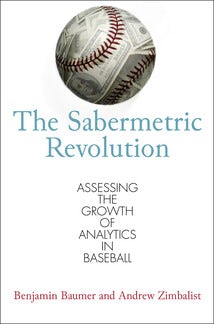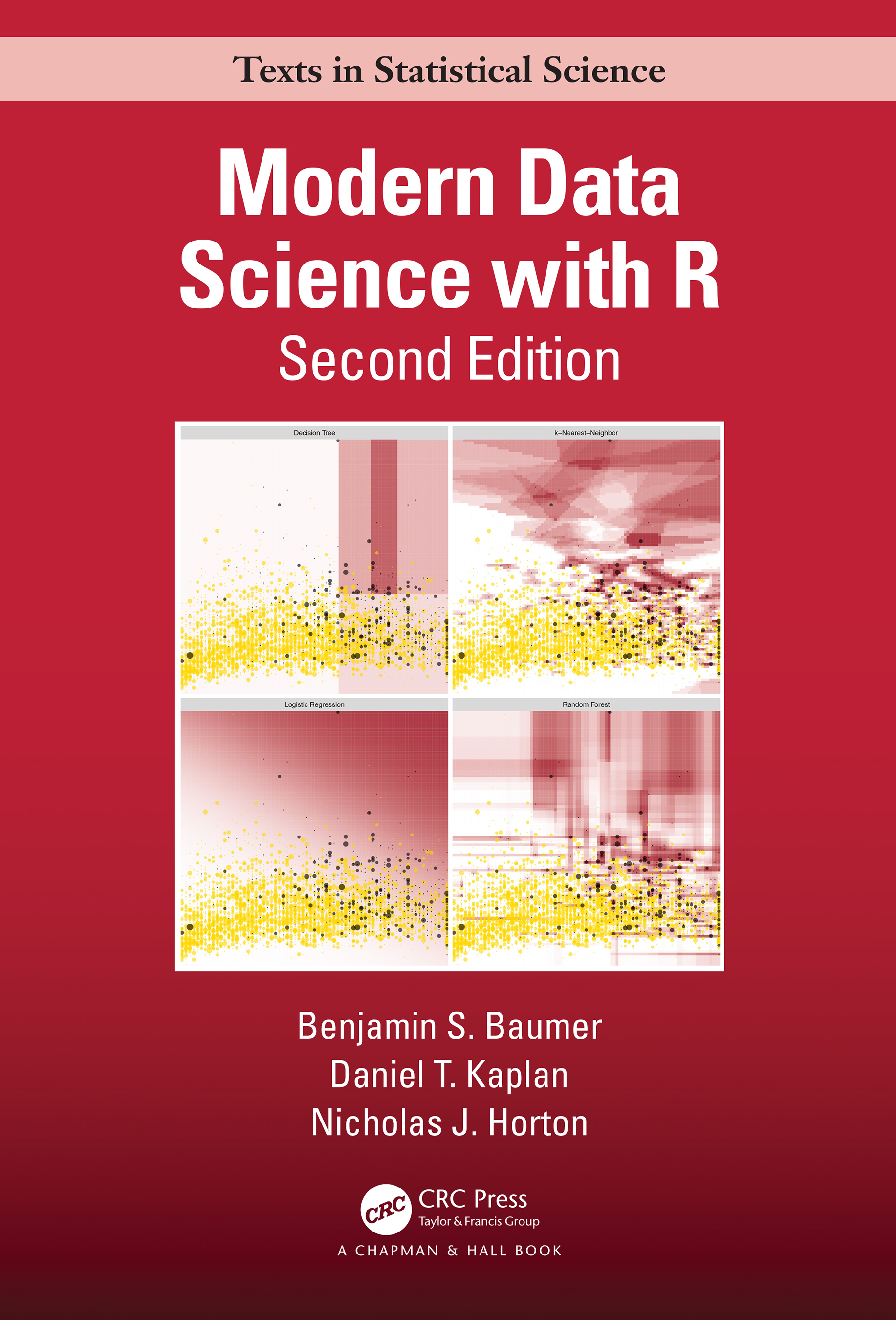Research
I am a data scientist. Data science is an emerging field commonly described as “the practice of deriving valuable insights from data,” and this thread runs through all of my work. My scholarly contributions have come in five main areas:
- sports analytics:
- Learning about how sports (particularly baseball) work through the analysis of data
- statistics and data science education:
- What, how, and why are we teaching? What, how, and why should we be teaching?
- data science:
- Building tools to make data-based research easier and more reproducible
- network science, and analysis of algorithms:
- Theoretical work about properties of networks and graph algorithms
- statistics and data science consulting:
- Aiding your research through statistical modeling and data visualization
Subfields of interest to me include network science, applied statistics, sabermetrics, sports analytics, statistical modeling, analysis of algorithms, combinatorial optimization, data visualization, graph theory, and combinatorics. My Erdös number is 3, as I have co-authored a paper with Amotz Bar-Noy, who has co-authored a paper with Noga Alon, who has co-authored a paper with Paul Erdős.
My background is academically diverse, in that my undergraduate degree is in economics (my first declared major was English), my doctorate is in mathematics, my thesis adviser is in computer science, and my professional experience is in statistics. As such, my research tends to be interdisciplinary, with an emphasis on applying available techniques from any discipline to address the question of interest.
In 2012, I completed my Ph.D. in Mathematics at the Graduate Center of the City University of New York, where my advisor was Amotz Bar-Noy, also of Brooklyn College. Previously, I earned an M.A. in Applied Mathematics from the University of California, San Diego, and a B.A. in Economics from Wesleyan University.
In 2019, I won the Significant Contributor Award from the Section on Statistics in Sports of the American Statistical Association.
r fontawesome::fa("file"): Please see my C.V. for complete details on my work.
Books
Analyzing Baseball Data with R, 2nd edition
Analyzing Baseball Data with R, 2nd Edition introduces R to sabermetricians, baseball enthusiasts, and students interested in exploring the richness of baseball data. It equips you with the necessary skills and software tools to perform all the analysis steps, from importing the data to transforming them into an appropriate format to visualizing the data via graphs to performing a statistical analysis.
Buy the book from:
Modern Data Science with R, 2nd edition
Contemporary data science uses both statistical modeling and computer programming to extract meaning from data. It requires a tight integration of knowledge from statistics, computer science, mathematics, and a domain of application. This book, which is intended for readers with some background in statistics and modest prior experience with coding, helps them develop and practice the appropriate skills to tackle complex data science projects. Most of the examples are done in R, but SQL, Python, and other cutting-edge tools are discussed as well.
r fontawesome::fa("book-open") Read the 2nd edition
Buy the book from:

The Sabermetric Revolution
The Sabermetric Revolution: Assessing the Growth of Analytics in Baseball, is co-authored with leading sports economist Andrew Zimbalist. We examine the evolution of sabermetrics in baseball and other sports since the publication of Moneyball, summarize the current state of sabermetric thinking, and address the question of whether there is any evidence that sabermetrics has actually worked. The book was published by the University of Pennsylvania Press in 2014.
Buy the book from:
Ongoing Projects

DSC-WAV
I am the PI on a nine institution, $1.2 million workforce developed project funded by the National Science Foundation.
The DSC-WAV project simultaneously addresses two problems: 1) the inability of community-based and non-profit organizations to tackle data science problems; and 2) the lack of real world experience gained by students studying data science.
This project addresses both issues by deploying teams of data science students to assist local organizations, thereby increasing the long-term capacity of the data science workforce.
OpenIntro
I developed a series of courses on Introductory Statistics with R sequence of courses for DataCamp, an interactive platform to learn R and data science. Mine Çetinkaya-Rundel (Duke), Andrew Bray (Reed), and Jo Hardin (Pomona) are working with me on these courses. We are horrified by the recent sexual harassment scandal at DataCamp and the ensuing coverup.
Much of that content is now available through interactive tutorials developed with the learnr package supporting the textbook OpenIntro::Introduction to Modern Statistics Tutorials.

ETL packages for R
etl is an R package to facilitate Extract - Transform - Load (ETL) operations for medium data. The end result is generally a populated SQL database, but the user interaction takes place solely within R.
Publication List
Search for me on:
r fontawesome::fa("google"): Google Scholar
r fontawesome::fa("graduation-cap"): DBLP
r fontawesome::fa("scroll"): Publons
r fontawesome::fa("id-badge"): ORCID



